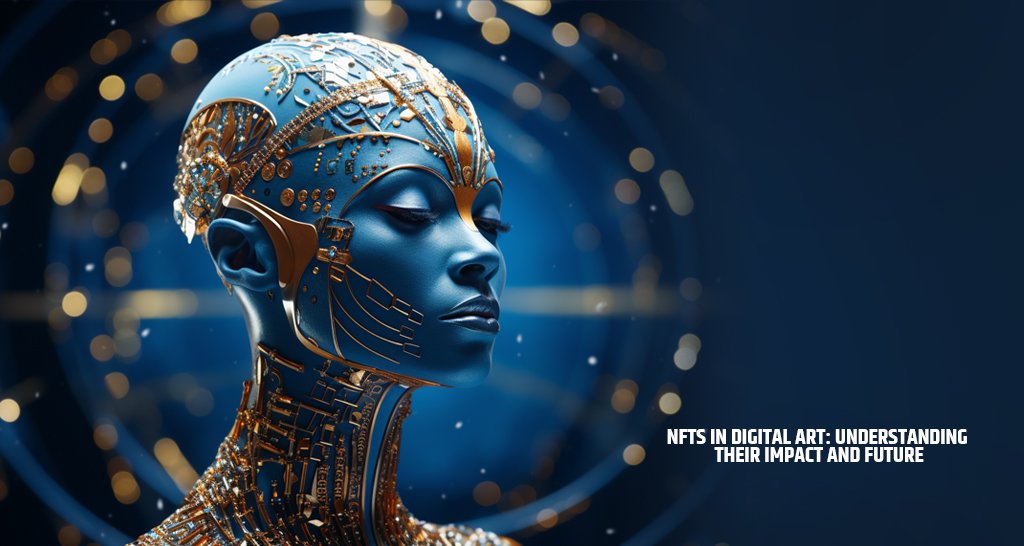Understanding NFTs: The Basics
Non-fungible tokens (NFTs) have emerged as a transformative force in the digital art market, allowing for new forms of ownership and authenticity in the online space. Unlike cryptocurrencies such as Bitcoin or Ethereum, which are fungible and can be exchanged for one another at equal value, NFTs are unique digital representations of assets. Each NFT is characterized by its distinct information and identification, making it impossible to replace or exchange one NFT for another on a one-to-one basis. This uniqueness is achieved through blockchain technology, which securely records the transactions and ownership history of each token.
The functioning of NFTs on the blockchain is a critical factor in understanding their value. When a digital asset is tokenized as an NFT, it is assigned a specific identifier that connects it to its creator and ownership history. This record is stored on a decentralized network, ensuring transparency and immutability. Artists can create digital artworks, music, videos, and other forms of intellectual property, which can then be minted as NFTs. As a result, these tokens provide irrefutable proof of ownership and provenance, addressing issues of plagiarism and copyright infringement that have historically plagued the digital art sphere.
The properties of NFTs also differentiate them from traditional digital assets. While someone can easily copy an image or video file, ownership of the NFT grants the holder the rights associated with that particular item, such as the ability to sell, trade, or showcase it. This creates a sense of exclusivity and value that resonates with collectors and investors alike. Furthermore, artists have the opportunity to receive royalties on secondary sales, providing them with an ongoing revenue stream. In this way, NFTs are revolutionizing the interaction between artists, collectors, and the digital art market, paving the way for a new era of creativity and engagement.
The Transformation of Digital Art Sales
The advent of non-fungible tokens (NFTs) has significantly shifted the paradigm of digital art sales, marking a departure from traditional methods to a more dynamic online marketplace. Historically, artists relied on galleries and exhibitions to showcase their work, often facing barriers to access and limited visibility. The emergence of NFTs has democratized this space, enabling artists to sell directly to collectors without intermediaries. Online platforms such as OpenSea, Rarible, and Foundation have created specialized ecosystems where digital art can be bought, sold, and exchanged with verifiable ownership.
One notable aspect of this transformation is the introduction of innovative pricing models. In the era of NFTs, traditional fixed-price sales have been complemented with auctions, enabling artists to capitalize on demand. Recent reports indicate that some digital artworks have fetched millions of dollars at auction, underscoring the heightened interest in this domain. For instance, the sale of digital artist Beeple’s “Everydays: The First 5000 Days” for $69 million exemplifies this remarkable trend, bridging a substantial gap between the digital and traditional art world.
Moreover, NFTs provide a unique opportunity for artists to establish direct relationships with their collectors. Through blockchain technology, artists can share their stories and engage with buyers, fostering a sense of community around their work. This direct connection also opens avenues for post-sale revenue, where artists can earn royalties on resales, a concept largely absent in traditional art markets. Statistical data shows that artists can receive a percentage of future sales, with figures as high as 10%, creating an ongoing revenue stream which was previously unattainable.
Ultimately, the intersection of art and technology via NFTs has heralded a new era for digital artists, increasing both their visibility and revenue potential in ways that were previously unimaginable.
Challenges and Criticisms of NFTs in Digital Art
The advent of non-fungible tokens (NFTs) in the digital art market has brought about substantial changes, yet it has also been accompanied by various challenges and criticisms that warrant attention. One of the primary concerns revolves around environmental implications. Many NFT transactions depend on blockchain technology, particularly Ethereum, which has faced criticism for its high energy consumption and carbon footprint. The process of minting and trading NFTs can be resource-intensive, raising concerns about sustainability and the environmental impact of digital art practice.
Additionally, the issue of copyright and plagiarism in the NFT space poses a significant challenge for artists. The decentralized nature of blockchain and the relative anonymity of transactions can make it difficult to determine the original creator of a digital artwork. As a result, many artists have found their works replicated and sold as NFTs without their consent, leading to instances of intellectual property theft. This scenario creates a perception of insecurity and distrust in the NFT digital art market, which may deter creators from engaging with this new medium.
Moreover, the volatility of the NFT market has emerged as another critical concern. The rapid fluctuations in the value of NFTs can create a precarious environment for artists and collectors alike. While some NFTs sell for astronomical prices, others may drastically lose their value shortly after purchase, specifically affecting artists who rely on sales for income. This predicament is compounded by the speculative nature of many NFT investments, which can lead to erratic market behavior influenced by trends, hype, and social media. Such instability raises questions regarding the long-term viability of NFTs as a sustainable revenue stream for digital artists.
The Future of NFTs and Digital Art Integration
The integration of Non-Fungible Tokens (NFTs) into the digital art market is not merely a passing trend; it represents a paradigm shift that will continue to evolve in the coming years. As technology advances, we can anticipate a growing acceptance of NFTs among artists, collectors, and institutions alike. Analysts predict that the efficacy of blockchain technology will be a significant driving force, enhancing the security and transparency of art transactions. With the rise of 5G and improved internet connectivity, the accessibility of NFTs is poised to expand, ultimately benefiting digital artists.
Moreover, potential collaborations between digital artists and traditional institutions, such as galleries and museums, may redefine the art landscape. Traditional institutions are increasingly recognizing the value of digital art and NFTs as viable art forms, creating opportunities for exhibitions that blend both worlds. These partnerships could lead to innovative projects that blend physical and digital experiences, further showcasing the boundaries that NFTs can transcend. As traditional galleries begin to embrace digital art exhibitions, the barriers between various art forms may continue to dissolve.
The changing role of collectors is another aspect worth noting. As the landscape shifts, collectors will not only seek to acquire unique digital pieces but will also become active participants in the curation and promotion of these works. The collector’s role may transform into that of a guardian or patron, supporting artists financially through NFT sales, while also contributing to the narrative surrounding digital art. The evolution of the collector’s identity paves the way for a more interactive and collaborative art community.
As we anticipate these developments, expert opinions suggest that the future of NFTs and digital art integration will likely be characterized by increased recognition, collaboration, and community engagement. This ongoing evolution has the potential to reshape how art is created, bought, and appreciated, signifying a milestone in the historical context of art and technology.
Understanding NFTs: The Basics
Non-fungible tokens (NFTs) have emerged as a transformative force in the digital art market, allowing for new forms of ownership and authenticity in the online space. Unlike cryptocurrencies such as Bitcoin or Ethereum, which are fungible and can be exchanged for one another at equal value, NFTs are unique digital representations of assets. Each NFT is characterized by its distinct information and identification, making it impossible to replace or exchange one NFT for another on a one-to-one basis. This uniqueness is achieved through blockchain technology, which securely records the transactions and ownership history of each token.
The functioning of NFTs on the blockchain is a critical factor in understanding their value. When a digital asset is tokenized as an NFT, it is assigned a specific identifier that connects it to its creator and ownership history. This record is stored on a decentralized network, ensuring transparency and immutability. Artists can create digital artworks, music, videos, and other forms of intellectual property, which can then be minted as NFTs. As a result, these tokens provide irrefutable proof of ownership and provenance, addressing issues of plagiarism and copyright infringement that have historically plagued the digital art sphere.
The properties of NFTs also differentiate them from traditional digital assets. While someone can easily copy an image or video file, ownership of the NFT grants the holder the rights associated with that particular item, such as the ability to sell, trade, or showcase it. This creates a sense of exclusivity and value that resonates with collectors and investors alike. Furthermore, artists have the opportunity to receive royalties on secondary sales, providing them with an ongoing revenue stream. In this way, NFTs are revolutionizing the interaction between artists, collectors, and the digital art market, paving the way for a new era of creativity and engagement.
The Transformation of Digital Art Sales
The advent of non-fungible tokens (NFTs) has significantly shifted the paradigm of digital art sales, marking a departure from traditional methods to a more dynamic online marketplace. Historically, artists relied on galleries and exhibitions to showcase their work, often facing barriers to access and limited visibility. The emergence of NFTs has democratized this space, enabling artists to sell directly to collectors without intermediaries. Online platforms such as OpenSea, Rarible, and Foundation have created specialized ecosystems where digital art can be bought, sold, and exchanged with verifiable ownership.
One notable aspect of this transformation is the introduction of innovative pricing models. In the era of NFTs, traditional fixed-price sales have been complemented with auctions, enabling artists to capitalize on demand. Recent reports indicate that some digital artworks have fetched millions of dollars at auction, underscoring the heightened interest in this domain. For instance, the sale of digital artist Beeple’s “Everydays: The First 5000 Days” for $69 million exemplifies this remarkable trend, bridging a substantial gap between the digital and traditional art world.
Moreover, NFTs provide a unique opportunity for artists to establish direct relationships with their collectors. Through blockchain technology, artists can share their stories and engage with buyers, fostering a sense of community around their work. This direct connection also opens avenues for post-sale revenue, where artists can earn royalties on resales, a concept largely absent in traditional art markets. Statistical data shows that artists can receive a percentage of future sales, with figures as high as 10%, creating an ongoing revenue stream which was previously unattainable.
Ultimately, the intersection of art and technology via NFTs has heralded a new era for digital artists, increasing both their visibility and revenue potential in ways that were previously unimaginable.
Challenges and Criticisms of NFTs in Digital Art
The advent of non-fungible tokens (NFTs) in the digital art market has brought about substantial changes, yet it has also been accompanied by various challenges and criticisms that warrant attention. One of the primary concerns revolves around environmental implications. Many NFT transactions depend on blockchain technology, particularly Ethereum, which has faced criticism for its high energy consumption and carbon footprint. The process of minting and trading NFTs can be resource-intensive, raising concerns about sustainability and the environmental impact of digital art practice.
Additionally, the issue of copyright and plagiarism in the NFT space poses a significant challenge for artists. The decentralized nature of blockchain and the relative anonymity of transactions can make it difficult to determine the original creator of a digital artwork. As a result, many artists have found their works replicated and sold as NFTs without their consent, leading to instances of intellectual property theft. This scenario creates a perception of insecurity and distrust in the NFT digital art market, which may deter creators from engaging with this new medium.
Moreover, the volatility of the NFT market has emerged as another critical concern. The rapid fluctuations in the value of NFTs can create a precarious environment for artists and collectors alike. While some NFTs sell for astronomical prices, others may drastically lose their value shortly after purchase, specifically affecting artists who rely on sales for income. This predicament is compounded by the speculative nature of many NFT investments, which can lead to erratic market behavior influenced by trends, hype, and social media. Such instability raises questions regarding the long-term viability of NFTs as a sustainable revenue stream for digital artists.
The Future of NFTs and Digital Art Integration
The integration of Non-Fungible Tokens (NFTs) into the digital art market is not merely a passing trend; it represents a paradigm shift that will continue to evolve in the coming years. As technology advances, we can anticipate a growing acceptance of NFTs among artists, collectors, and institutions alike. Analysts predict that the efficacy of blockchain technology will be a significant driving force, enhancing the security and transparency of art transactions. With the rise of 5G and improved internet connectivity, the accessibility of NFTs is poised to expand, ultimately benefiting digital artists.
Moreover, potential collaborations between digital artists and traditional institutions, such as galleries and museums, may redefine the art landscape. Traditional institutions are increasingly recognizing the value of digital art and NFTs as viable art forms, creating opportunities for exhibitions that blend both worlds. These partnerships could lead to innovative projects that blend physical and digital experiences, further showcasing the boundaries that NFTs can transcend. As traditional galleries begin to embrace digital art exhibitions, the barriers between various art forms may continue to dissolve.
The changing role of collectors is another aspect worth noting. As the landscape shifts, collectors will not only seek to acquire unique digital pieces but will also become active participants in the curation and promotion of these works. The collector’s role may transform into that of a guardian or patron, supporting artists financially through NFT sales, while also contributing to the narrative surrounding digital art. The evolution of the collector’s identity paves the way for a more interactive and collaborative art community.
As we anticipate these developments, expert opinions suggest that the future of NFTs and digital art integration will likely be characterized by increased recognition, collaboration, and community engagement. This ongoing evolution has the potential to reshape how art is created, bought, and appreciated, signifying a milestone in the historical context of art and technology.



